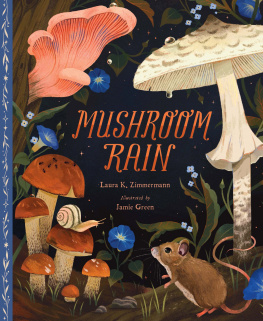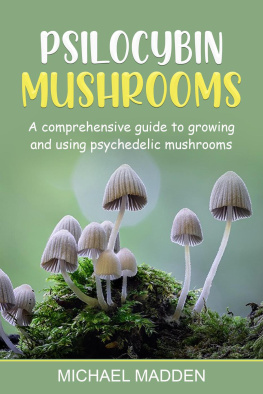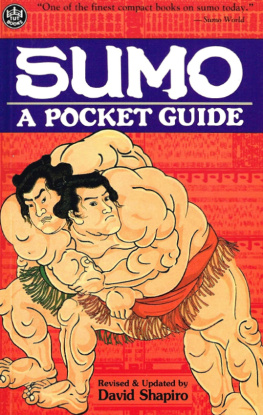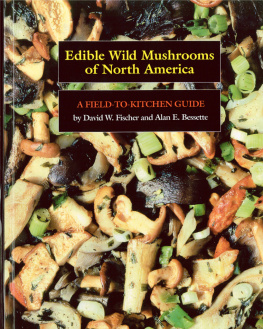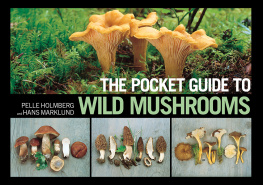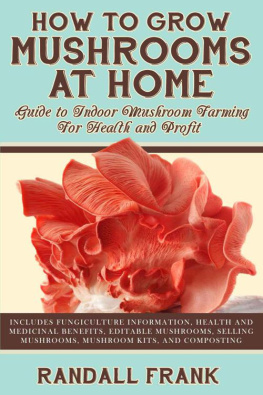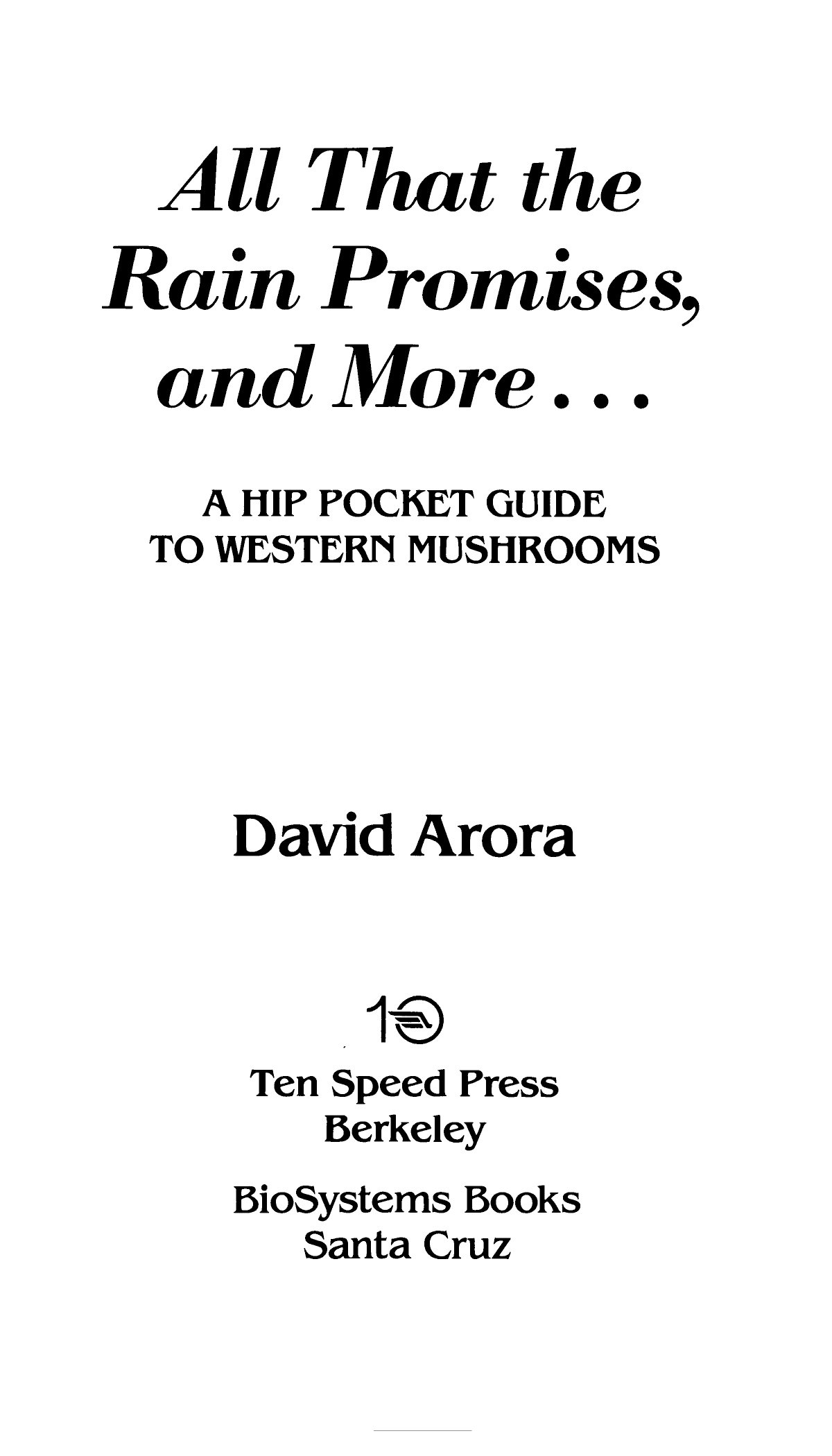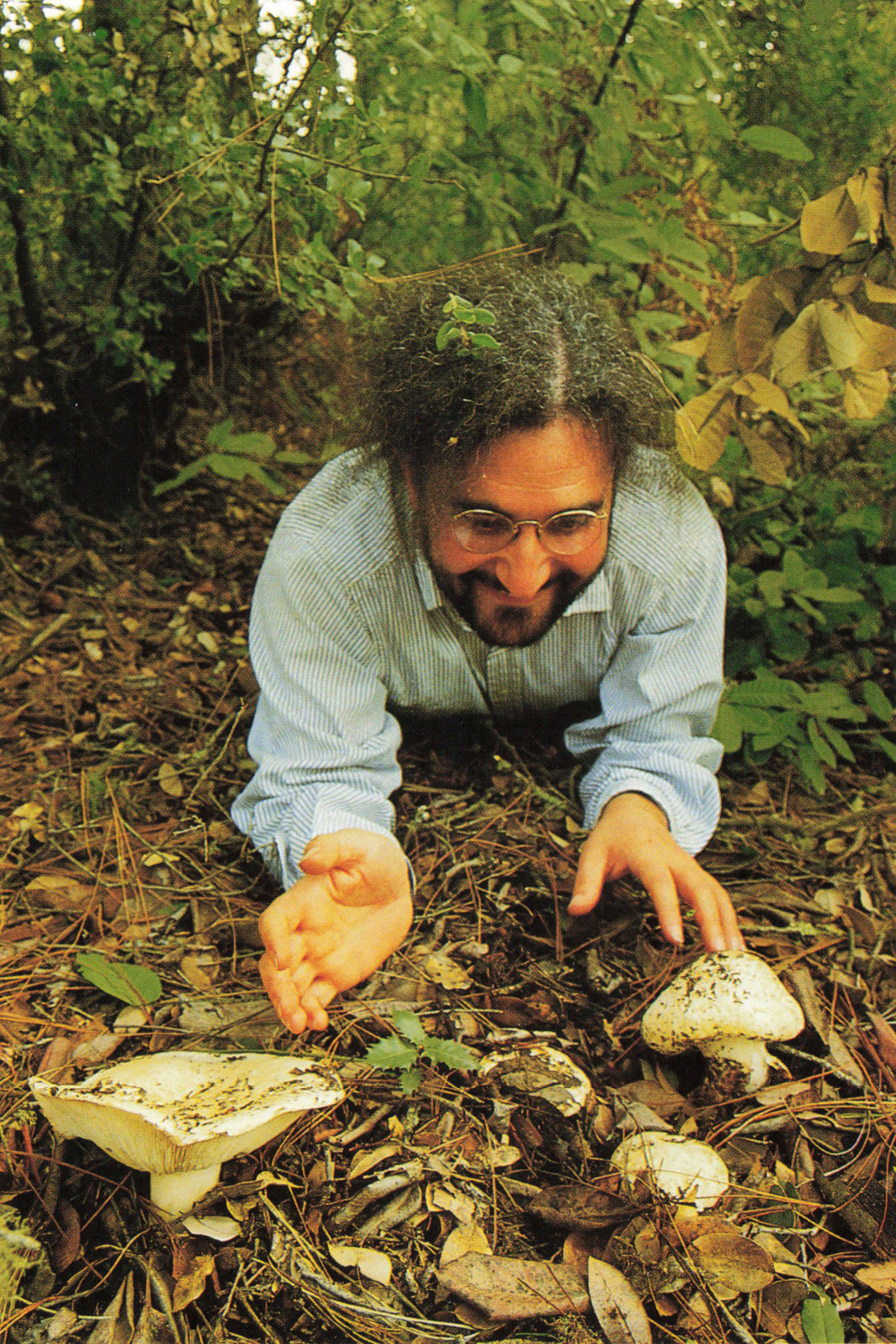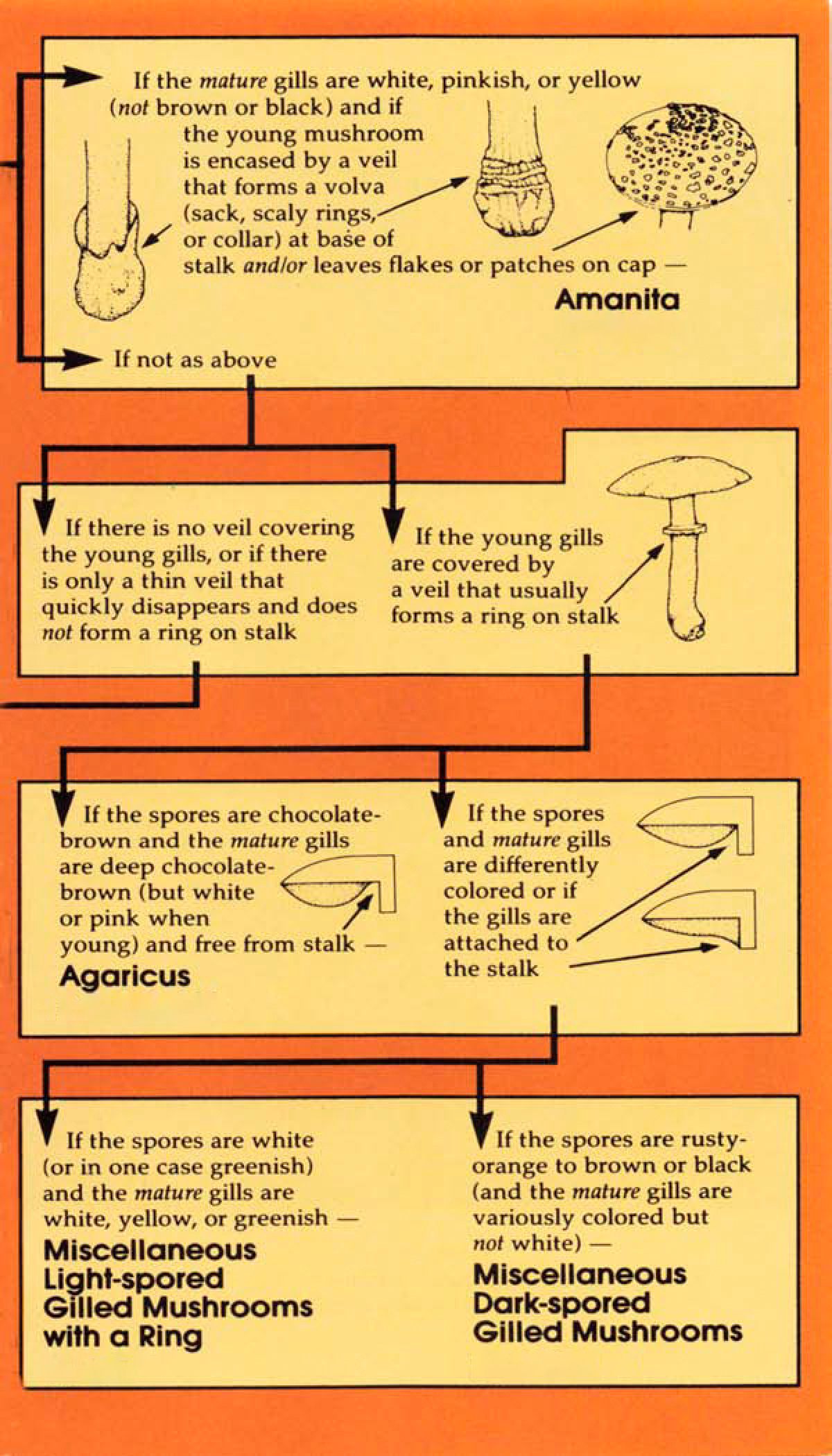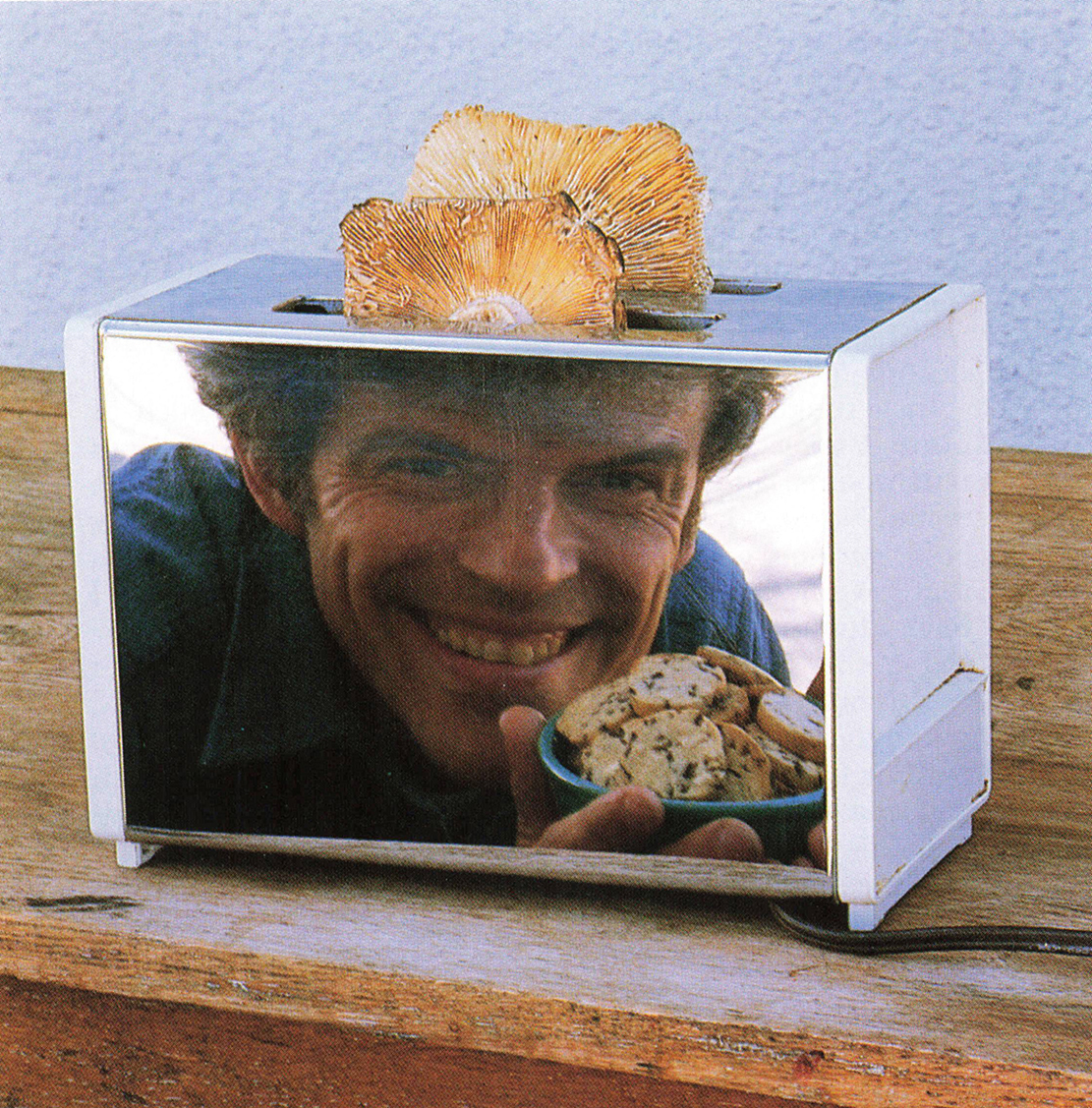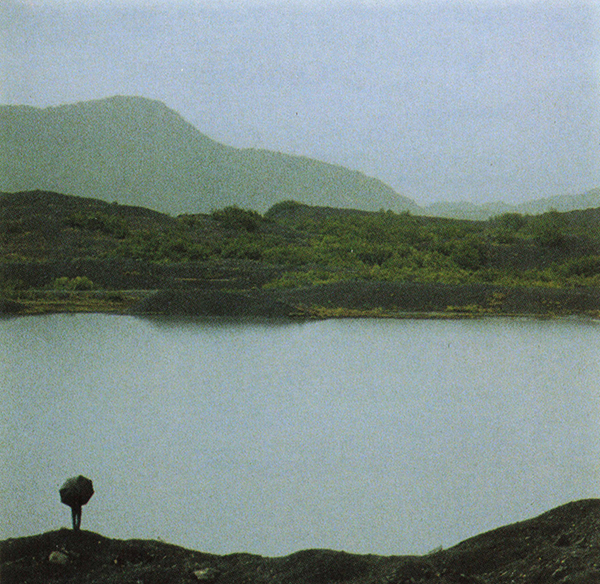Copyright 1991 by David Arora.
All rights reserved. Published in the United States by Ten Speed Press, an imprint of the Crown Publishing Group, a division of Random House, Inc., New York.
Ten Speed Press and the Ten Speed Press colophon are registered trademarks of Random House, Inc.
The haiku were translated by R.H. Blyth (Mushrooms in Japanese Verse, Transactions of the Asiatic Society of Japan, Vol. XI, 1973).
Grateful acknowledgment is made to Vintage International, Random House, for permission to reprint an excerpt from Speak, Memory by Vladimir Nabokov.
Includes index.
1. Mushrooms West (U.S.) Identification.
I. Title
Preface
All That the Rain Promises, and More is a pocket-sized field guide to the most distinctive wild mushrooms of western North America. Stretching from the Rocky Mountains to the Pacific Coast and from the deserts of northern Mexico to Alaska, this vast and varied region harbors several thousand kinds of mushrooms. The approximately 200 depicted here are those most likely to pique the interest of the average wonderer and wanderer. A more comprehensive treatment isnt practical in a book this size. Witness my joy and pride, the comprehensive guide Mushrooms Demystified. It is eminently quotable but not notable for being totable. The only pocket it will fit in is a kangaroos!
The design of this book is simple: each mushroom is illustrated with one or more color photographs accompanied by a concise, easy-to-understand list of identifying features plus information on edibility and habitat. In other words, it is a completely self-contained field guide for beginners. But it will also appeal to more experienced hunters as a field companion to Mushrooms Demystified, and is cross-referenced for that purpose. Even the jaded mushroom junkie whose cupboard runneth over with mushroom memorabilia will find something new: several species are depicted in color for the first time, and unusual uses of mushrooms are documented.
In a fungophobic (mushroom-loathing) society such as ours, it takes a certain boldness and curiosity to seek out mushrooms, and creativity to put them to good use. As a result, North American mushroom hunters are an unusually bold, curious, creative, even iconoclastic and bizarre bunch that have nourished and enhanced my life immeasurably. I have attempted to introduce some of them to readers by lacing this book with a generous helping of first-person accounts, novel cooking suggestions, stories, limericks, and photographs of them caught in the act of doing things with or to their favorite mushrooms. I am grateful to each and every one of them for their contributions and camaraderie. Few of us get to write books. Even fewer get to write books about mushrooms. As one who does both, sharing the insights and experiences of those who dont is a fitting way to record a small but significant part of our future history and cultural heritage.
One final note to readers unfamiliar with Mushrooms Demystified: I firmly believe in stressing the fun in fungi. In leafing through these pages, you may wonder what all the fanciful, foolish, or (shudder) extraneous material is doing in a factual guide. After all, it is the practical, hands-on, how-to-identify information that makes this book useful and gives it substance. But I ask: is it any stranger or less desirable to sprinkle the facts with flakes of fancy than it is to liven up solemn, substantial fare like potatoes with something fancier and more flavorful, like wild mushrooms?
I say: thank goodness for the potatoes, but thank God for mushrooms!
David Arora
Santa Cruz, California
A mushroom-minded individual: the author with candy cap cookies ().
Contents
I used to think I needed the sun to have fun. Rain was an inconvenience, something to wait out, not wade in. The farmers needed it. I didnt. Rain meant I couldnt do things. It was the enemy of activity, the bane of beach barbecues, an imposition from above that didnt have the courtesy to call ahead.
Mushrooms changed all that. Now when it rains, I cant wait to get out, to plunge into that pristine, misty realm of glistening freshness and fleeting fragrance to see what new wonders the earth has to offer. The miracle of mushrooms is in their spontaneity and resilience. Springing from ground that looked so hard and bleak, they seem to embody all that we carry, and bury, inside us: secret passions and dormant dreams awaiting inspiration, instigation, and conditions that precipitate growth. Rain has become my catalyst, drawing me up, bringing me out.
I still savor the sunwho doesnt? Rain refreshes, sunshine caresses. But as I bask in the hazy glow of another lazy summer day, my life feels as empty as the sky above, and as surely as the shivering survivors of winter look forward to the spring, I find myself yearning for clouds returning, all that the rain promises, and more
Introduction
Mushrooms are the reproductive structures or fruit of certain fungi. The most familiar kind of mushroom has a cap with gills (radiating blades) on its underside. Millions of microscopic reproductive units called spores are discharged from the gills and dispersed by air currents. Only a small percentage of spores land in a favorable environment, where they germinate to form new fungi.
Fungi do not manufacture their own food like plants. In this respect they are like animals: they must obtain food from outside sources. The part of the mushroom fungus that digests nutrients is an intricate web of fine threads collectively called the mycelium (plural: mycelia). The mycelium may live anywhere from a few days (in perishable substrates like dung) to several hundred years, periodically producing mushrooms when enough moisture is available.
Mushrooms, or more exactly the fungi that produce them, are a vital and omnipresent part of our environment. Despite their bad press, the overwhelming majority are beneficial. A few are


